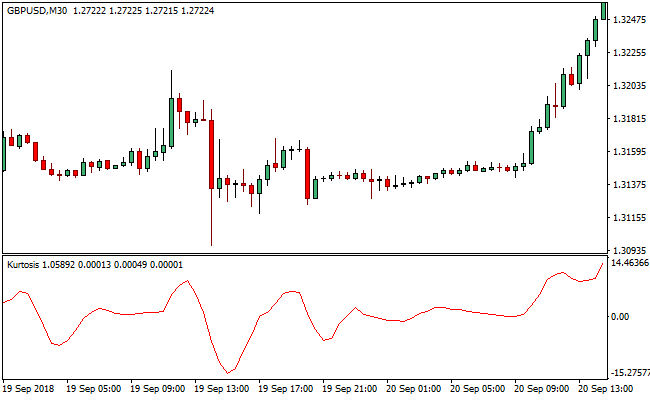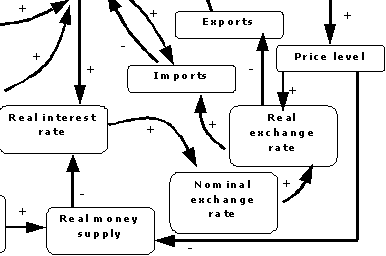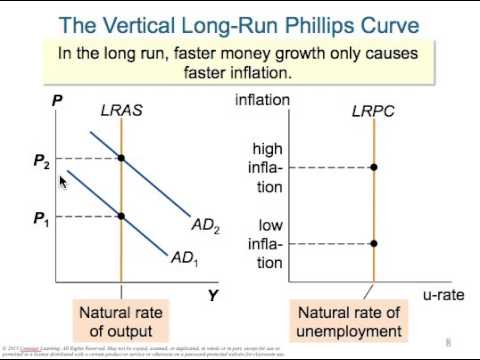News & Notice
공지사항
| 제목 | Balance Sheet: Definition, Example, Elements of a Balance Sheet | ||
| 작성일 | 2021-12-24 | 작성자 | 정새론 |


Here you can find the meaning of what are marketable securities defined & explained in the simplest way possible. Stock of companies as well as bonds of firm and government entities are also part of these securities, if they are marketable that is, they can be readily sold. Cash Reserve Ratio is the share of a bank’s total deposit that is mandated by the Reserve Bank of India to be maintained with the latter as reserves in the form of liquid cash. Capital assets can be defined as those assets that are expected to yield revenue long-term. Buildings, plants, properties, and furniture all fall under capital assets. Tangible assets or physical assets are assets that have a physical existence.
What are examples of marketable securities?
Stocks, bonds, preferred shares, and ETFs are among the most common examples of marketable securities. Money market instruments, futures, options, and hedge fund investments can also be marketable securities. The overriding characteristic of marketable securities is their liquidity.
As you can see, the advantages of Liquid Finances far overweigh the disadvantages. Hence Liquid Finances are the perfect investment option for retail investors. Operation Freights When you invest in Bank deposits, you don’t have any pay any fund operation freights. But in a Liquid fund, your fund director manages your portfolio and charges a fund operation freights.
Can we say that Fixed assets are Current Assets?
ClearTax can also help you in getting your business registered for Goods & Services Tax Law. A drew regularly 4,000 in the beginning of every month for six months ended 30th September, 2022. PCS Industries Ltd., the Appellant herein, is a company registered under the Companies Act. The Appellant holds a certificate of registration granted by the Securities and Exchange Board of India , to act as a Category I Registrar to the Issue and Share Transfer Agent . Also, an asset for one company might not be an asset for another. For example, furniture can be an asset for a cement company but not for a company dealing in furniture.
Financial planning in any company usually deals with the control of long-term and short-term financial resources. While the long-term resources are used to plan for expansion and growth, the short-term resources are mostly used to cover the operational expenses. A bearer security is tradable security and gives shareholders the rights that arise from the security. They are transferred from investor to investor, in some cases by endorsement and delivery. Concerning ownership, bearer securities prior to digitization were always split. Each security represents a separate asset that is legally separated from the other securities on the same issue.
- Registered papers will be transferred by changing the registration.
- For instance, if a company has Rs. 50 lakhs surplus money for a short period, it can invest in a commercial paper or treasury bill or a long-term government bond.
- However, an asset for one company might not be an asset for another.
- Within every of the two asset classes, there are subcategories that provide additional perception on every asset.
- In developing a strategy, the first and foremost issue is an understanding of the firm’s cash flow behaviour.
They include holdings such as stocks, bonds, and other securities that are bought and sold daily. Current assets is the calculation of the current ratio, which determines the financial health of a business. Stakeholders and investors look at this number before investing in a company.
What are marketable securities?
They are usually securities that can be bought or sold on an change. The securities traded heavily on public exchanges are known as marketable securities. So these short-term assets qualify well to fit the list of current resources. There are generally two types of marketable securities, namely debt and equity securities. With this information, stakeholders can also understand the company’s prospects.

Quick ratio on its own may not suffice in analysing the liquidity of a company. The analysis must undertake a comparison with competitors as well as existing industry standards since the ratio is entirely a mathematical value that does not provide an estimation of assets and liabilities under calculation. It should also take into consideration the cash flow ratio or the current ratio for determining an accurate and comprehensive estimation of the liquidity of a company. In most cases, inventories take a much longer time to be liquidated. For converting inventories to cash, it will have to be sold to the customer.
What is Quick Ratio?
Whenever you expect the capital to get paid in the current year, these are known as current resources. If, however, your company offers products and services to customers on long credit periods, a part of accounts receivables will not qualify to be present in current resources. Listed securities are listed on the stock exchange, and issuers can attract investors by seeking a listing of securities and providing a liquid and regulated trading market.
What are the example of marketable and non-marketable securities?
Examples include savings bonds, shares in limited partnerships or privately-held companies, and some complex derivatives products. In contrast, marketable securities include common stock, Treasury bills, and money market instruments, among others.
Marketable securities are defined as any unrestricted financial instrument that can be purchased or bought on a public inventory trade or a public bond trade. Therefore, marketable securities are classified as both marketable fairness security or marketable debt safety. Current asset sorts are listed in order of liquidity, with essentially the most liquid appearing first. Cash and money equivalents, corresponding to cash in checking or financial savings accounts, are the first gadgets listed. For instance, a company can sell Treasury bonds it owns just by inserting the order with a broker.
Importance of Working Capital Management
However, an asset for one company might not be an asset for another. There are various types of assets, such as current assets, non-current assets, tangible assets, intangible assets, financial assets, etc. Now that you have an idea of how values are recorded in several accounts in a balance sheet, you can take a closer look with an example of how to read a balance sheet.
What are the two main types of marketable securities?
- Equity securities.
- Debt securities.
That is, the most liquid asset occupies the top place in the list. Marketable securities are securities or debts that are to be sold or redeemed within a year. These are financial instruments that can be easily converted to cash such as government bonds, common stock or certificates of deposit. Since we are examining the nature of units to consider as to whether they are securities or not, it is necessary to have a look at the Regulations governing mutual funds. In this context it is to be noted that the 1993 Mutual Fund Regulations, which was in position when the Arihant Mangal Scheme was floated, was repealed by the 1996 Regulations.
Current Assets Ratio
Marketable securities refers to property that can be offered inside a brief time frame, usually by way of a quoted public market. Marketable securities present investors with a liquidity corresponding to cash along with the ability to earn a return when the assets are not being used. A marketable safety is any equity or debt instrument that may be transformed into cash with ease. Ideally, the current resources of a company must exceed its current liabilities. It is one of the few liquid fractions that gauge a company’s ability to use cash and equivalents to meet the immediate working capital requirements.
This definition is an expanded and clarificatory version of the definition provided in the 1993 Regulation, retaining the substantive portion intact. Current assets are short-term assets that can be converted into cash within a financial year. These are usually recurring as they occur due to the day-to-day operations of a business. For example, marketable securities, inventory, accounts receivables, etc.
Internally generated intangible assets are not recorded in the books of accounts. For example, a company’s brand reputation is not recorded on the balance sheet. All debt securities represent a promise to pay a specific amount of money to the holder of the security on a specific date .
It is because you can have more cash for day-to-day business operations. Over accumulation, this will prove to be of higher value, as is the time value of capital. Whereas deficiency of a resource like inventory can disrupt the business procedures. Likewise, the company must have the necessary cash to pay the outstanding bills. Its dollar value represents the total cash and liquidity position of the business. Also, knowing this helps prepare well for the required arrangements for a smooth operation.
Treasury bonds are like notes in every respect in that their original maturities are from more than ten years to come as long as thirty years. Certified securities are presented in the form of physical paper. Securities can also be held through a direct registration system that records shares. In other words, the transfer agent manages the shares on behalf of the company without a physical certificate. As a useful financial metric, the liquidity ratio helps to understand the financial position of a company. Considering the liquid assets, present financial obligations are analysed to validate the safety limit of a company.

You may refer Management of Inventorymoney market page of economic dailies such as The Economic Times or The Hindu Business Line, where you get indicative rates for many of these securities for different maturity periods. Exhibit-7 shows some of the inputs, which you normally see in a money market page of economic dailies. Give an account marketable securities examples of the activity of marketable securities of a company you are Management of Inventoryaware of. Investing in marketable securities, there are many companies, which have lost heavily by investing in marketable securities. Securities can represent either an ownership or debt position or both, or it can mean rights or entitlements.
Marketable securities are highly-liquid financial tools that can be sold or converted into cash within a year of investment. Businesses issue these securities to raise capital for operating expenses or business expansion. On the other hand, a business invests in marketable securities to make some short-term earnings with the cash at hand. In terms of section 12 of the SEBI Act, certificate of registration is required to be obtained from SEBI to carry on the business of mutual funds.
Although there are many types of contingent claim securities, the three most popular kinds of investments today are options, warrants, and convertible securities. What is a “marketable security of a like nature” and hence eligible to be included in the definition of Securities under Section 2 of the SCRA, is at times clarified through judicial interpretations. The management tries to forecast the cash flows of the firm and identify any mismatch in the supply and demand of cash. In addition, cash can also be used for hedging or speculative motive.
What is marketable vs non-marketable securities?
Ownership is easily transferable, and values are based upon pricing in the market. Marketable securities are also considered liquid because they can easily be converted into cash. In comparison, non-marketable securities aren't bought and sold on markets, which means they're also independent of market fluctuations.
